Narciarstwo biegowe jest generalnie bezpieczniejsze niż zjazdowe. Dlaczego? Wszystko sprowadza się do prędkości, terenu i ryzyka urazów:
- Prędkość: Narciarstwo biegowe jest wolniejsze (poniżej 15 mph), podczas gdy narciarstwo zjazdowe może osiągać ponad 40 mph. Wolniejsze prędkości oznaczają mniej poważnych upadków.
- Teren: Narciarstwo biegowe odbywa się na płaskich lub łagodnie pofałdowanych trasach, które są łatwiejsze do pokonania. Narciarstwo zjazdowe obejmuje strome, nieprzewidywalne stoki.
- Urazy: Narciarstwo biegowe powoduje głównie urazy przeciążeniowe, takie jak zapalenie ścięgien. Narciarstwo zjazdowe niesie większe ryzyko urazów traumatycznych, zwłaszcza kolan (zerwania ACL), barków, a nawet urazów głowy.
Jeśli szukasz bezpieczniejszego, przyjaznego dla początkujących sportu zimowego, narciarstwo biegowe to dobry wybór. A jeśli chcesz mieć jeszcze większą kontrolę i łatwość, sprawdź krótsze modele nart Snowfeet – są kompaktowe, łatwe w użyciu i działają z zwykłymi butami zimowymi. Idealne, by bezpiecznie bawić się na śniegu!
Narciarze alpejscy próbują klasycznego narciarstwa biegowego
Ryzyka bezpieczeństwa: narciarstwo biegowe kontra zjazdowe
Bezpieczeństwo narciarstwa biegowego i zjazdowego zależy od takich czynników jak teren, prędkość i umiejętności potrzebne do poruszania się w każdym stylu. Rozłóżmy to na czynniki pierwsze.
Ryzyka związane z terenem i środowiskiem
Narciarstwo biegowe zwykle odbywa się na płaskich, łagodnie pofałdowanych trasach. Te przygotowane ścieżki zapewniają bardziej przewidywalną powierzchnię, co ułatwia pokonywanie drobnych przeszkód. Kontrolowane środowisko pomaga zmniejszyć niespodzianki, takie jak nagłe spadki czy strome zmiany wysokości.
Z drugiej strony, narciarstwo zjazdowe odbywa się na stromszych stokach, gdzie teren może się gwałtownie zmieniać. Wyższe wysokości często przynoszą nieprzewidywalną pogodę i warunki, co daje narciarzom mniej czasu na reakcję na nagłe zagrożenia. Te różnice w terenie sprawiają, że narciarstwo zjazdowe jest z natury bardziej ryzykowne.
Prędkość i ryzyko kolizji
Prędkość odgrywa dużą rolę w bezpieczeństwie. Narciarstwo biegowe zwykle odbywa się w umiarkowanym tempie, dając narciarzom więcej czasu na dostosowanie się do zmian na trasie lub unikanie przeszkód. Upadki przy tych niższych prędkościach są zazwyczaj mniej poważne.
W narciarstwie zjazdowym sytuacja wygląda zupełnie inaczej. Duże prędkości oznaczają, że nawet drobne błędy mogą prowadzić do poważnych konsekwencji. Dodatkowo zatłoczone stoki i wąskie trasy zwiększają prawdopodobieństwo kolizji, zwłaszcza w godzinach szczytu.
Poziom umiejętności i krzywa nauki
Wymagania dotyczące umiejętności wpływają także na bezpieczeństwo. Narciarstwo biegowe jest przyjazne dla początkujących, z podstawowymi technikami łatwymi do opanowania. Łagodny charakter płaskiego terenu zwiększa jego atrakcyjność dla osób zaczynających, zmniejszając ryzyko urazów.
Narciarstwo zjazdowe wymaga bardziej zaawansowanych umiejętności, takich jak ostre zakręty, kontrola krawędzi i radzenie sobie z dużymi prędkościami. Bardziej stroma krzywa nauki, w połączeniu z wyzwaniami nieprzewidywalnego terenu, może oznaczać więcej upadków i urazów u początkujących.
Jeśli chodzi o sprzęt, tradycyjne zestawy zjazdowe wymagają precyzyjnego strojenia i konserwacji. Sprzęt do narciarstwa biegowego jest jednak prostszy i łatwiejszy w obsłudze. Produkty takie jak Snowfeet* NORDIC Cross-country Skate Skis idą o krok dalej w tej prostocie. Ich krótsza konstrukcja poprawia kontrolę i sprawia, że sport jest bardziej przyjazny dla początkujących. To nie tylko zmniejsza obciążenie fizyczne, ale także obniża ryzyko urazów, czyniąc narciarstwo biegowe jeszcze bezpieczniejszym wyborem dla nowicjuszy.
Dzięki prostym technikom i mniej skomplikowanemu sprzętowi, narciarstwo biegowe - zwłaszcza z innowacjami takimi jak Snowfeet* - stanowi bezpieczniejszą i bardziej dostępną alternatywę dla precyzji i wyzwań narciarstwa zjazdowego.
Wymagania fizyczne i rodzaje urazów
Bliższe przyjrzenie się wzorcom urazów ujawnia ryzyka związane z każdym sportem. Wyzwania fizyczne i rodzaje urazów pokazują, który sport niesie większe niebezpieczeństwo.
Typowe urazy w narciarstwie zjazdowym
Narciarstwo zjazdowe to przede wszystkim prędkość, strome stoki i ostre zakręty, które mocno obciążają stawy i więzadła.
Urazy kolan są najczęstszym problemem dla narciarzy zjazdowych. Dr Michael Kolosky, ortopeda z Mass General Brigham Sports Medicine, wyjaśnia:
Najczęstsze urazy u narciarzy dotyczą kolana. Urazy kolan stanowią prawie połowę wszystkich urazów narciarskich, głównie w postaci zerwań ACL i MCL oraz uszkodzeń łąkotki kolanowej.
Statystyki to potwierdzają, pokazując, że urazy kolan stanowią od 27% do 41% wszystkich urazów narciarstwa alpejskiego. Wskaźnik urazów ACL (więzadła krzyżowego przedniego) szacuje się na 0,23 urazu na tysiąc dni narciarskich. Te urazy często zdarzają się, gdy narta utknie w śniegu, zmuszając nogę do nienaturalnego skrętu, lub gdy narciarz traci równowagę, powodując niewłaściwy rozkład ciężaru. Nacisk do przodu na całkowicie wyprostowane kolano może również prowadzić do poważnych uszkodzeń.
Urazy górnej części ciała to kolejny problem. Upadki z dużą prędkością i kolizje mogą powodować zwichnięcia barku, zerwania stożka rotatorów i złamania. Złamania nadgarstka i „kciuk narciarza” – zerwanie więzadła pobocznego łokciowego – są powszechne, gdy narciarze instynktownie używają rąk do hamowania upadku.
Urazy głowy, w tym poważne urazy mózgu, również mogą wystąpić i często zagrażają życiu.
Urazy przeciążeniowe w narciarstwie biegowym
W narciarstwie biegowym urazy częściej wiążą się z powtarzalnym ruchem niż z nagłym urazem. Około 75% urazów wynika z przeciążenia, podczas gdy 25% to efekt wypadków.
Dr Kolosky podkreśla to rozróżnienie:
W narciarstwie biegowym, na przykład, jest dużo powtarzalnych ruchów i długotrwałego, dynamicznego wysiłku, dlatego obserwujemy więcej tendinopatii i zapaleń ścięgien.
Do najczęstszych urazów przeciążeniowych należą zapalenie ścięgna stożka rotatorów spowodowane powtarzającym się używaniem kijków, ból ścięgna Achillesa od ciągłych odbić oraz ból rzepkowo-udowy wokół rzepki. Powtarzające się zginanie i prostowanie podczas technik takich jak double-poling może prowadzić do bólu dolnej części pleców. Zła technika, na przykład zbyt mocne ściskanie kijków, może nadwyrężać łokcie i przedramiona, podczas gdy ograniczona siła bioder lub ruchomość kostek może powodować dodatkowe obciążenia w innych obszarach.
Dobra wiadomość? Wiele z tych urazów można uniknąć dzięki właściwej technice i stopniowemu treningowi.
Korzyści fizyczne narciarstwa biegowego
Narciarstwo biegowe nie tylko zmniejsza ryzyko poważnych urazów - wzmacnia też ciało w sposób, który pomaga zapobiegać długoterminowym problemom. Pracuje jednocześnie nad mięśniami tułowia, nóg, ramion i pleców, wspierając zrównoważony rozwój mięśni. Stała potrzeba utrzymania równowagi podczas ślizgania się i kroków wzmacnia mięśnie stabilizujące wokół bioder i tułowia, które są kluczowe dla unikania urazów ogólnie.
Poprawiona kondycja układu sercowo-naczyniowego dzięki narciarstwu biegowemu pomaga również utrzymać dobrą formę i zmniejsza błędy spowodowane zmęczeniem. Dodatkowo, naturalny zakres ruchu w tym sporcie utrzymuje biodra, kolana i kostki w elastyczności.
Produkty takie jak Snowfeet* NORDIC Cross-country Skate Skis idą o krok dalej. Ich krótszy, 90 cm design zmniejsza wymagania fizyczne, zachowując jednocześnie korzyści kondycyjne, pozwalając narciarzom cieszyć się sportem bez nadmiernego wysiłku. Ten przemyślany projekt pomaga zmniejszyć ryzyko urazów wynikających z przeciążenia, często spotykanych przy tradycyjnych zestawach.
Krótko mówiąc, podczas gdy narciarstwo zjazdowe niesie ze sobą większe ryzyko urazów pourazowych, narciarstwo biegowe skupia się na niskim obciążeniu i stopniowym wzmacnianiu kondycji, które wzmacnia ciało. Ta różnica sprawia, że narciarstwo biegowe jest ogólnie bezpieczniejszą opcją, a innowacje takie jak Snowfeet* pomagają uczynić je jeszcze bardziej dostępnym i przyjaznym dla zdrowia.
sbb-itb-17ade95
Jak produkty Snowfeet* poprawiają bezpieczeństwo
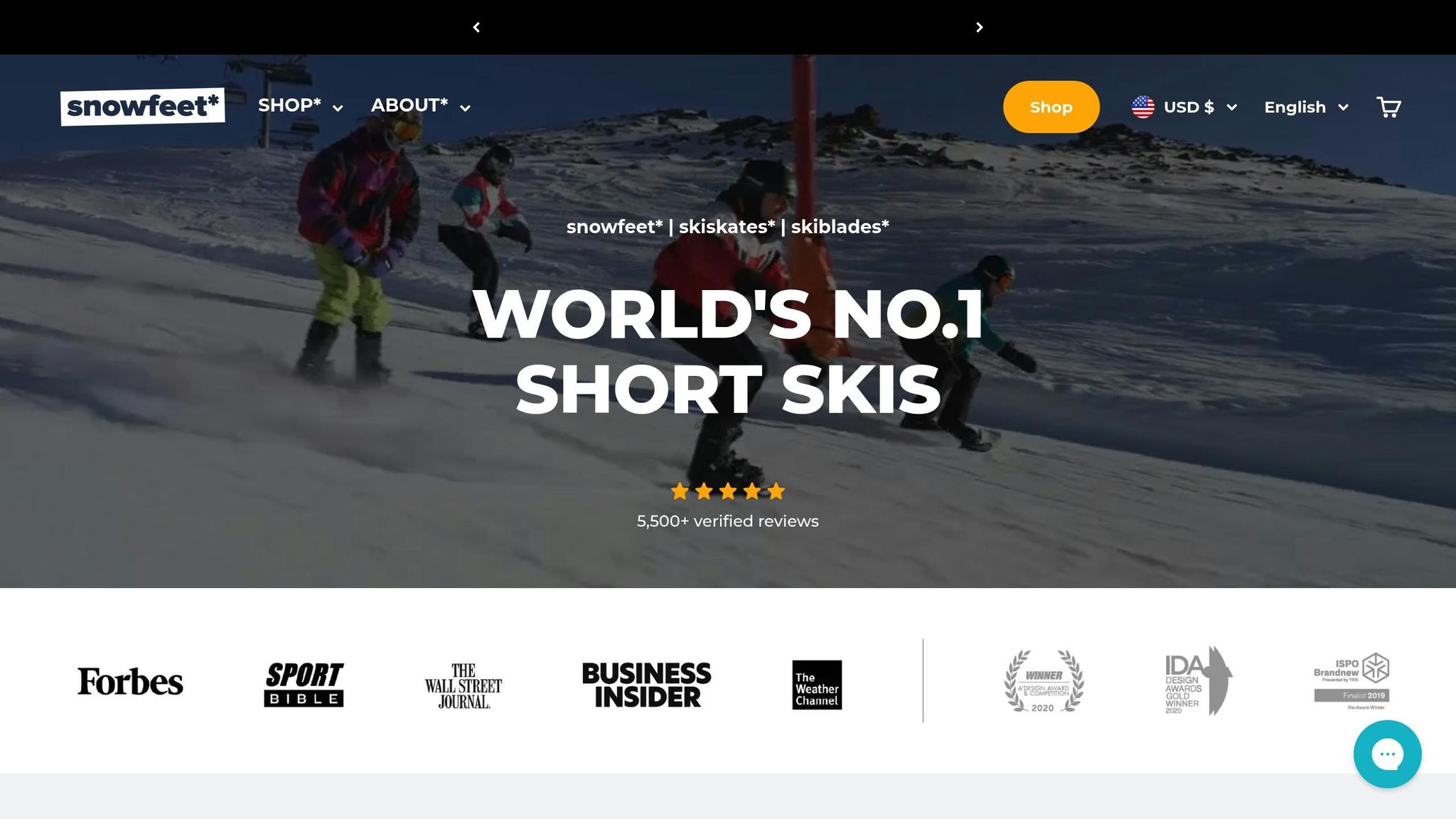
Krótkie narty Snowfeet* wprowadzają świeże podejście do sportów zimowych, rozwiązując typowe problemy bezpieczeństwa związane z tradycyjnymi nartami, jednocześnie zachowując zabawę i korzyści fitness. Oto jak ich inteligentne rozwiązania pomagają poprawić bezpieczeństwo.
Krótsze narty, bezpieczniejsza jazda
Snowfeet* NORDIC Cross-country Skate Skis mają zaledwie 90 cm długości (około 35 cali), co stanowi ogromną zmianę w porównaniu do typowych 150–200 cm długości tradycyjnych nart biegowych. Ta kompaktowa konstrukcja zmienia zasady gry na wiele sposobów.
Krótsze narty oznaczają szybszą reakcję na przesunięcia ciężaru, dając narciarzom większą kontrolę i zmniejszając obciążenie kolan przez minimalizowanie efektu dźwigni. Ta lepsza kontrola ułatwia omijanie przeszkód, takich jak drzewa, kamienie czy inni narciarze. Dodatkowo, jeśli upadniesz, krótsza długość ułatwia powrót do pozycji.
Wszechstronność na różnych terenach
W przeciwieństwie do tradycyjnych nart biegowych, które są głównie ograniczone do przygotowanych tras, Snowfeet* otwierają świat możliwości. Ich wieloterenowe możliwości nie tylko ułatwiają narciarstwo, ale także dodają przewagę w zakresie bezpieczeństwa.
Możesz ćwiczyć na swoim podwórku, aby zbudować pewność siebie i równowagę, zanim wybierzesz się na trudniejszy teren. Snowfeet* sprawdzają się na szlakach turystycznych, stokach, a nawet w miejskim śniegu, pozwalając wybrać miejsce dopasowane do twoich umiejętności. A jeśli warunki staną się niepewne w jednym miejscu, możesz szybko przenieść się w bezpieczniejsze, bez konieczności zmiany sprzętu. Ta elastyczność to duży plus dla bezpieczeństwa.
Komfort, który zmniejsza obciążenie
Snowfeet* zostały zaprojektowane z myślą o komforcie, co bezpośrednio przekłada się na bezpieczeństwo. Po pierwsze, działają z zwykłymi zimowymi butami, więc możesz pominąć masywne buty narciarskie. To nie tylko zwiększa wygodę, ale także daje lepszą kontrolę.
Krzywa nauki jest też krótsza. Możesz szybciej opanować podstawy niż przy tradycyjnym narciarstwie biegowym, co oznacza, że szybciej wyjdziesz z fazy początkującego – i jej typowych wpadek.
Transport i obsługa Snowfeet* to pestka w porównaniu z cięższym, bardziej masywnym tradycyjnym sprzętem narciarskim. Ich lekka konstrukcja łatwo mieści się w plecaku, co zmniejsza zmęczenie wynikające z noszenia ciężkiego sprzętu. Mniejsze zmęczenie oznacza mniej wypadków spowodowanych wyczerpaniem.
Na koniec, regulowany system wiązań współpracuje z różnymi typami butów, zapewniając dopasowanie na miarę i bezpieczeństwo. Zmniejsza to ryzyko związane z źle dopasowanym sprzętem, takim jak luźne lub zbyt ciasne wiązania. Wszystkie te cechy skoncentrowane na komforcie nie tylko sprawiają, że jazda na nartach jest przyjemniejsza, ale także obniżają ryzyko urazów związanych z przemęczeniem.
Porównanie: Snowfeet* vs. standardowy sprzęt narciarski
Przeanalizujmy, jak Snowfeet* wypadają na tle tradycyjnego sprzętu narciarskiego pod względem designu, przenośności i łatwości użytkowania.
Kluczowe wskaźniki porównawcze
Gdy postawisz Snowfeet* obok tradycyjnych nart, różnice są dość uderzające. Po pierwsze, sam rozmiar je wyróżnia. Narty biegowe mają zwykle długość od 59 do 79 cali (150–200 cm), a narty zjazdowe od 55 do 71 cali (140–180 cm). W przeciwieństwie do nich Snowfeet* są znacznie krótsze – od zaledwie 15 cali (38 cm) dla Mini Ski Skates do około 47 cali (120 cm) dla Snowfeet Short Skis.
Kolejnym ważnym czynnikiem jest przenośność. Tradycyjny sprzęt narciarski jest nieporęczny i często wymaga wielu elementów wyposażenia. Snowfeet*, z drugiej strony, są lekkie i kompaktowe – na tyle małe, że można je wrzucić do plecaka i wyruszyć na spontaniczną zimową zabawę.
Nauka korzystania ze Snowfeet* jest również znacznie łatwiejsza. Tradycyjne narciarstwo może wymagać tygodni (a nawet dłużej) na opanowanie, podczas gdy Snowfeet* są przyjazne dla początkujących, pozwalając szybciej zdobyć kontrolę. Do tego są niesamowicie wszechstronne. Narty biegowe najlepiej sprawdzają się na przygotowanych trasach, a narty zjazdowe są zaprojektowane do utrzymanych stoków. Snowfeet*? Radzą sobie niemal ze wszystkim – szlakami turystycznymi, parkami, twoim podwórkiem, a nawet miejskimi, zaśnieżonymi miejscami.
| Cechy | Tradycyjne narciarstwo biegowe | Tradycyjny zjazd | Snowfeet* |
|---|---|---|---|
| Długość | 59–79 cali (150–200 cm) | 55–71 cali (140–180 cm) | 15–47 cali (38–120 cm) |
| Wymagania dotyczące butów | Specjalistyczne buty biegowe | Ciężkie buty narciarskie | Zwykłe zimowe buty |
| Opcje terenu | Przygotowane trasy | Stoki narciarskie | Wszechstronne – działają na różnych powierzchniach |
| Transport | Wymaga bagażnika dachowego | Wymaga bagażnika dachowego | Przyjazne do plecaka |
| Krzywa nauki | Wymaga czasu | Wymaga czasu | Szybkie do nauki |
Te porównania jasno pokazują, jak Snowfeet* wnoszą prostotę i elastyczność.
Dlaczego Snowfeet* przewyższają standardowy sprzęt
Snowfeet* oferują praktyczne korzyści bezpieczeństwa. Ich krótsza długość ułatwia kontrolę prędkości, co pomaga zmniejszyć ryzyko urazów spowodowanych nadmierną prędkością. A jeśli popełnisz błąd, kompaktowa konstrukcja ułatwia powrót do równowagi - jest mniej dźwigni działającej przeciw Tobie, więc jest mniejsze prawdopodobieństwo nienaturalnego skręcenia lub nadwyrężenia się.
Kolejna zaleta? Możesz je nosić ze swoimi zwykłymi zimowymi butami. W przeciwieństwie do sztywnych, ciężkich specjalistycznych butów wymaganych do tradycyjnych nart, Snowfeet* pozwalają na naturalny i wygodny ruch. Ta dodatkowa elastyczność oznacza mniej bólu i dyskomfortu, co sprawia, że Twoje doświadczenie jest ogólnie przyjemniejsze.
Porozmawiajmy o kosztach. Tradycyjne zestawy narciarskie mogą być drogie. Potrzebujesz nart, butów, kijków, a czasem nawet dodatkowej odzieży. Do tego dochodzi konserwacja - smarowanie, ostrzenie krawędzi i okazjonalne serwisowanie u specjalisty. Snowfeet* to budżetowa, wszystko-w-jednym alternatywa. Są niskonakładowe w utrzymaniu i zaprojektowane tak, by radzić sobie na różnych terenach bez dodatkowych komplikacji.
Wreszcie, Snowfeet* sprawiają, że sporty zimowe są bardziej dostępne. Nie potrzebujesz drogich lekcji, wymyślnego sprzętu ani dostępu do przygotowanych tras. Możesz zacząć od swojego ogródka, budować pewność siebie we własnym tempie, a potem zmierzyć się z trudniejszymi miejscami, gdy będziesz gotowy. To zimowa zabawa bez stromej krzywej nauki - i bez wysokich kosztów.
Podsumowanie: Narciarstwo biegowe i Snowfeet* to bezpieczniejsze wybory
Kluczowe punkty bezpieczeństwa
Narciarstwo biegowe naturalnie wiąże się z niższymi prędkościami, co oznacza mniej kolizji i mniej poważnych urazów. Dodatkowo odbywa się na przewidywalnym terenie i ma łagodniejszą krzywą nauki, co ułatwia zdobycie pewności siebie. Te wbudowane zalety bezpieczeństwa stają się jeszcze lepsze w połączeniu z nowoczesnym sprzętem, takim jak Snowfeet*.
Snowfeet*: Bezpieczniejsza opcja
Snowfeet* podnoszą bezpieczeństwo narciarstwa biegowego dzięki inteligentnemu projektowi. Mierzą od 15 do 47 cali, są znacznie krótsze niż tradycyjne narty, co daje lepszą kontrolę.
Są też niesamowicie praktyczne - po prostu przypnij je do swoich zwykłych zimowych butów. To rozwiązanie sprzyja naturalnemu ruchowi stopy i poprawia równowagę, co pomaga zmniejszyć ryzyko upadków. Możesz nawet bezpiecznie ćwiczyć w swoim ogródku, zanim wyruszysz na bardziej strome trasy.
Z ceną zaczynającą się od 250 USD, Snowfeet* oferują połączenie bezpieczeństwa, kontroli i przystępności. Pozwalają cieszyć się sportami zimowymi bez nadwyrężania budżetu czy presji, by przekraczać własne granice komfortu. Jeśli szukasz połączenia wydajności i spokoju ducha, Snowfeet* to świetny wybór.
Najczęściej zadawane pytania
Czy narciarstwo biegowe jest bezpieczniejsze niż zjazdowe pod względem ryzyka urazów?
Narciarstwo biegowe jest często postrzegane jako bezpieczniejsza alternatywa dla narciarstwa zjazdowego, głównie dlatego, że odbywa się przy niższych prędkościach i obejmuje mniej intensywne ruchy. W przeciwieństwie do stromych stoków i szybkich zjazdów narciarstwa zjazdowego, narciarstwo biegowe zwykle odbywa się na bardziej płaskim terenie. To naturalnie zmniejsza ryzyko upadków i poważnych urazów, takich jak złamania czy zerwania więzadeł.
Narty Snowfeet NORDIC Cross-country Skate Skis (90 cm) podnoszą poziom bezpieczeństwa i przyjemności. Ich krótszy design oferuje lepszą kontrolę i równowagę, co sprawia, że są łatwiejsze w obsłudze w porównaniu do tradycyjnych nart używanych do zjazdów. Ta dodatkowa stabilność minimalizuje skutki upadków, czyniąc narciarstwo biegowe bezpieczniejszą i bardziej dostępną zimową aktywnością dla osób o różnym poziomie doświadczenia.
Jak produkty Snowfeet sprawiają, że narciarstwo biegowe jest bezpieczniejsze i łatwiejsze dla początkujących?
Produkty Snowfeet mają na celu uczynienie narciarstwa biegowego bardziej dostępnym i bezpieczniejszym, zwłaszcza dla początkujących. Te kompaktowe, lekkie narty współpracują bezproblemowo z zwykłymi zimowymi butami, eliminując potrzebę specjalistycznego sprzętu. Ich krótsza długość i łatwe w użyciu wiązania dają lepszą kontrolę i stabilność, co może pomóc zmniejszyć ryzyko upadków lub urazów.
W przeciwieństwie do tradycyjnych nart czy snowboardów, design Snowfeet jest znacznie mniej onieśmielający i fizycznie wymagający. To czyni je świetną opcją dla każdego, kto dopiero zaczyna przygodę z zimowymi sportami. Dzięki tym przyjaznym użytkownikowi cechom, początkujący narciarze mogą z pewnością wkroczyć na zaśnieżone tereny, czyniąc swoje pierwsze narciarskie przygody zarówno przyjemnymi, jak i bezpiecznymi.
Czy narty Snowfeet są bardziej wszechstronne niż tradycyjny sprzęt do narciarstwa biegowego?
Narty Snowfeet* są stworzone, by poradzić sobie praktycznie z każdym zimowym terenem, jaki możesz sobie wyobrazić – przygotowanymi trasami, ścieżkami poza trasą, a nawet nierównymi, wyboistymi powierzchniami. W przeciwieństwie do tradycyjnych nart biegowych, które zwykle najlepiej sprawdzają się na płaskich, przygotowanych terenach, Snowfeet* dają Ci większą kontrolę i elastyczność, co czyni je idealnymi do eksploracji różnorodnych zaśnieżonych krajobrazów.
Dzięki krótszej długości i lekkiej konstrukcji są super łatwe w manewrowaniu. To sprawia, że są nie tylko bezpieczniejsze, ale też o wiele bardziej zabawne, niezależnie od tego, czy testujesz nowy szlak, czy pokonujesz trudniejszy teren. Narty Snowfeet* oferują połączenie wszechstronności i łatwości, pozwalając jeździć niemal wszędzie z pewnością siebie i ogromną dawką emocji.
Powiązane wpisy na blogu
- Narty Altai Hok kontra narciarstwo biegowe: która narta podejściowa jest najlepsza?
- Bezpieczeństwo na mini nartach: lista kontrolna dla początkujących
- Jak zachować bezpieczeństwo podczas jazdy na nartach 'Sidecountry' lub Slackcountry (Wiedzieć, zanim pójdziesz)
- Krótkie narty kontra długie narty: porównanie ryzyka urazów







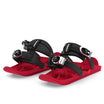
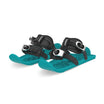












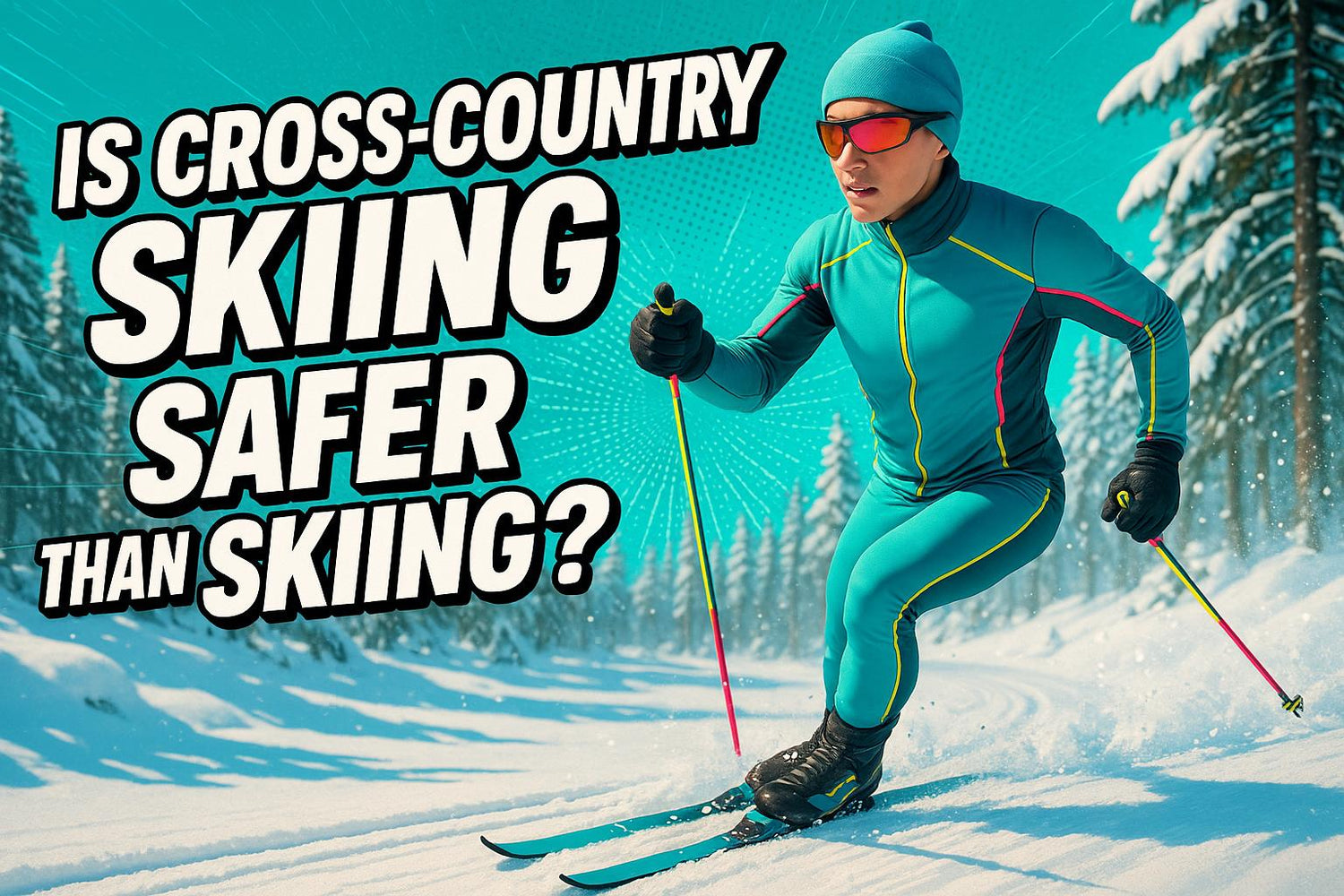
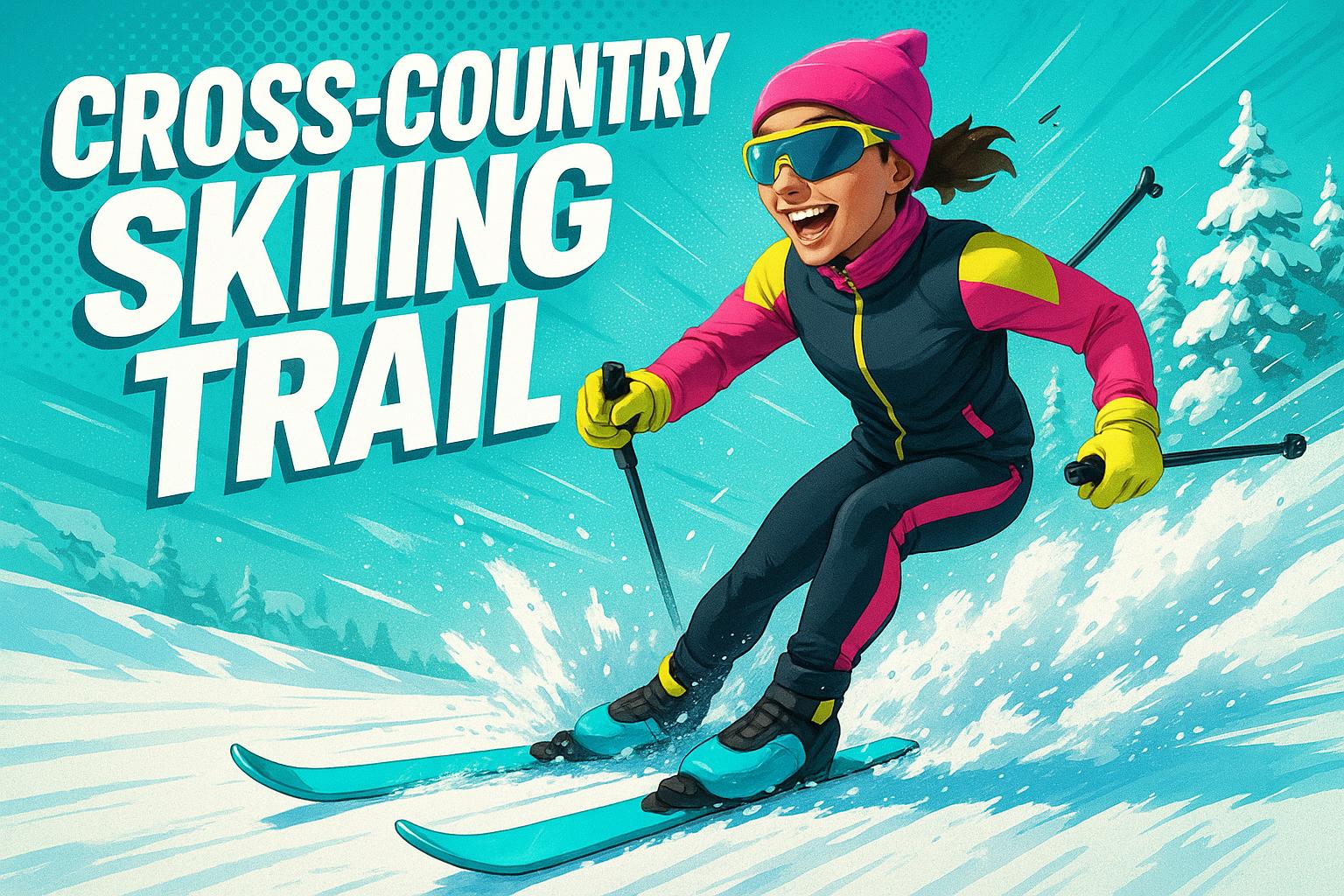
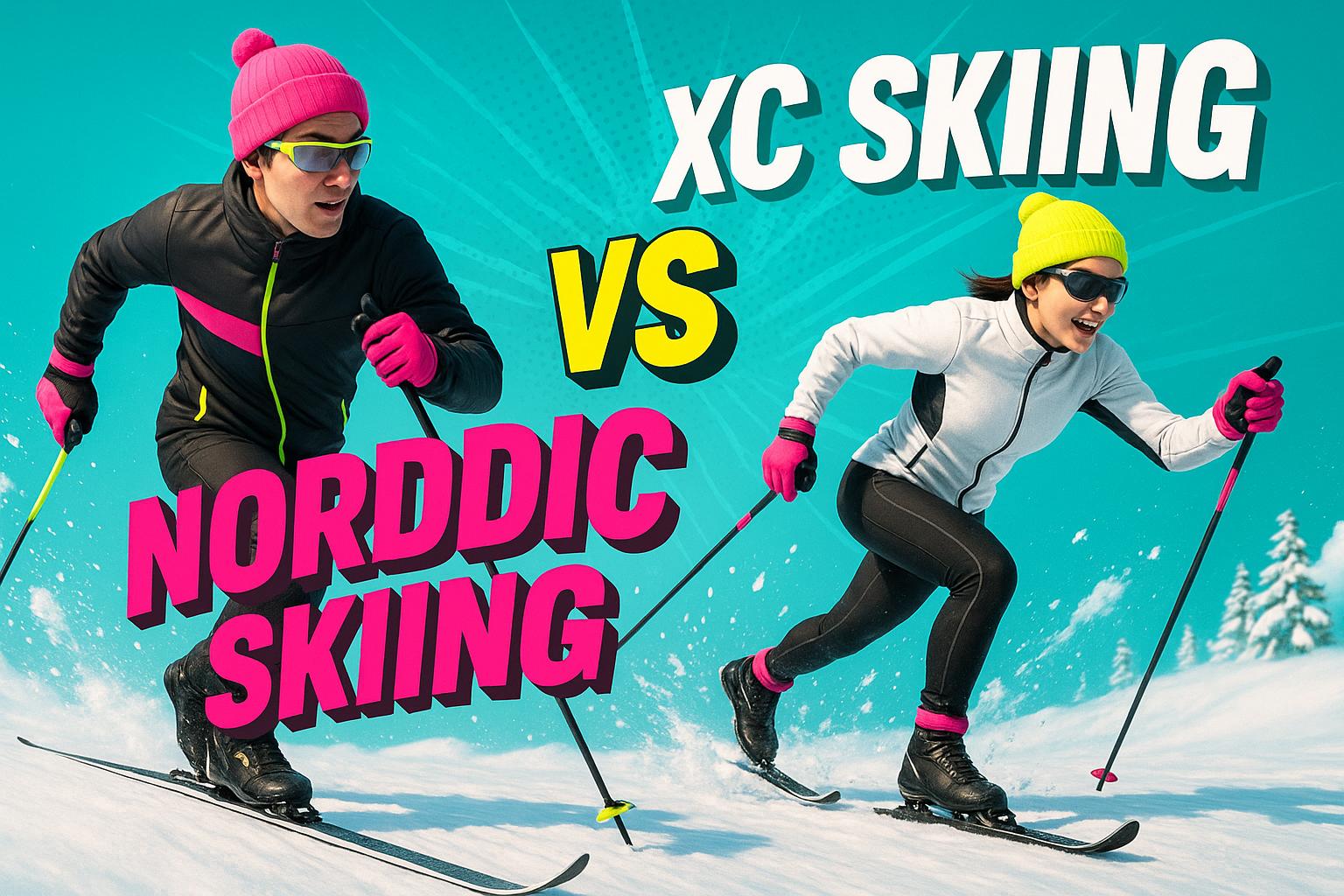




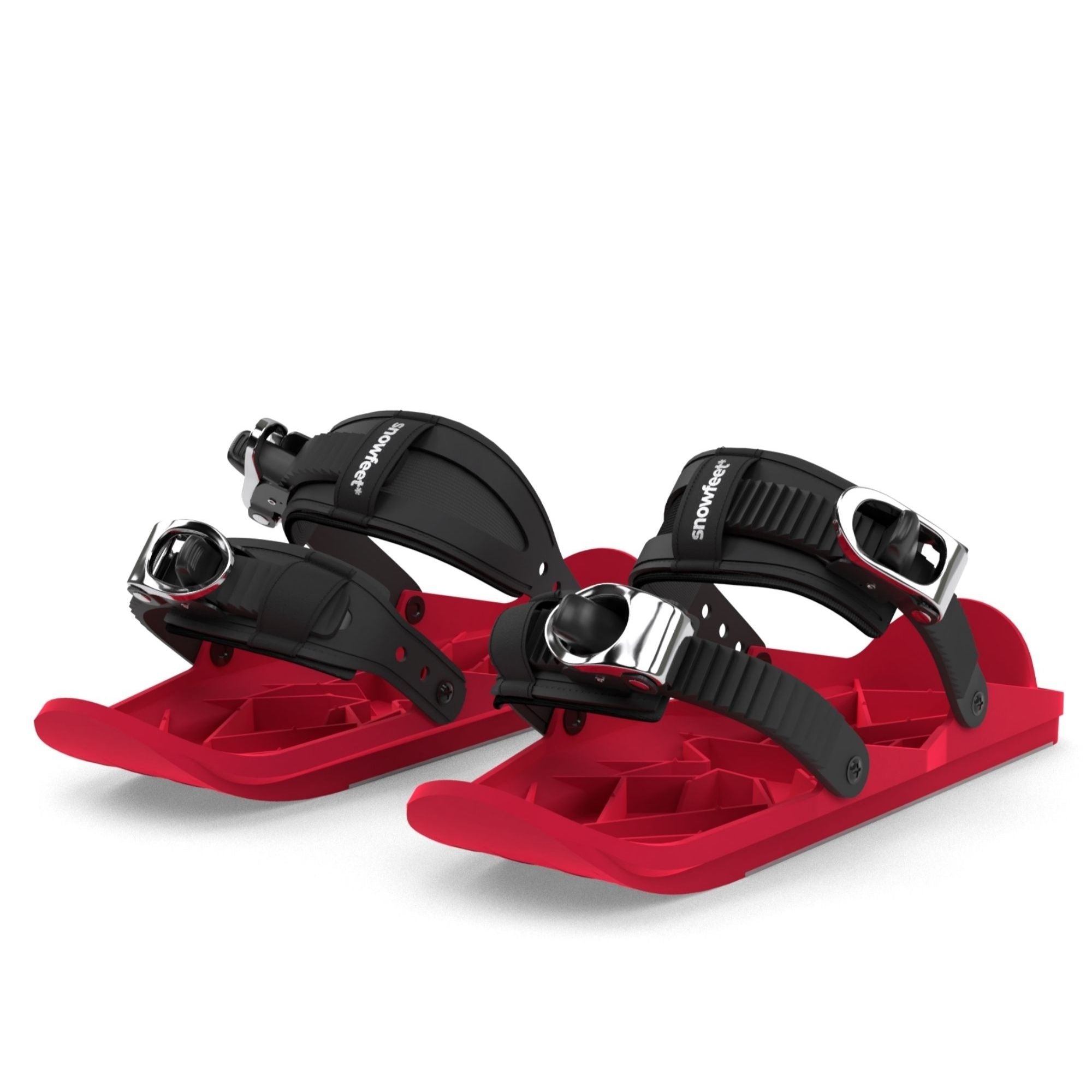
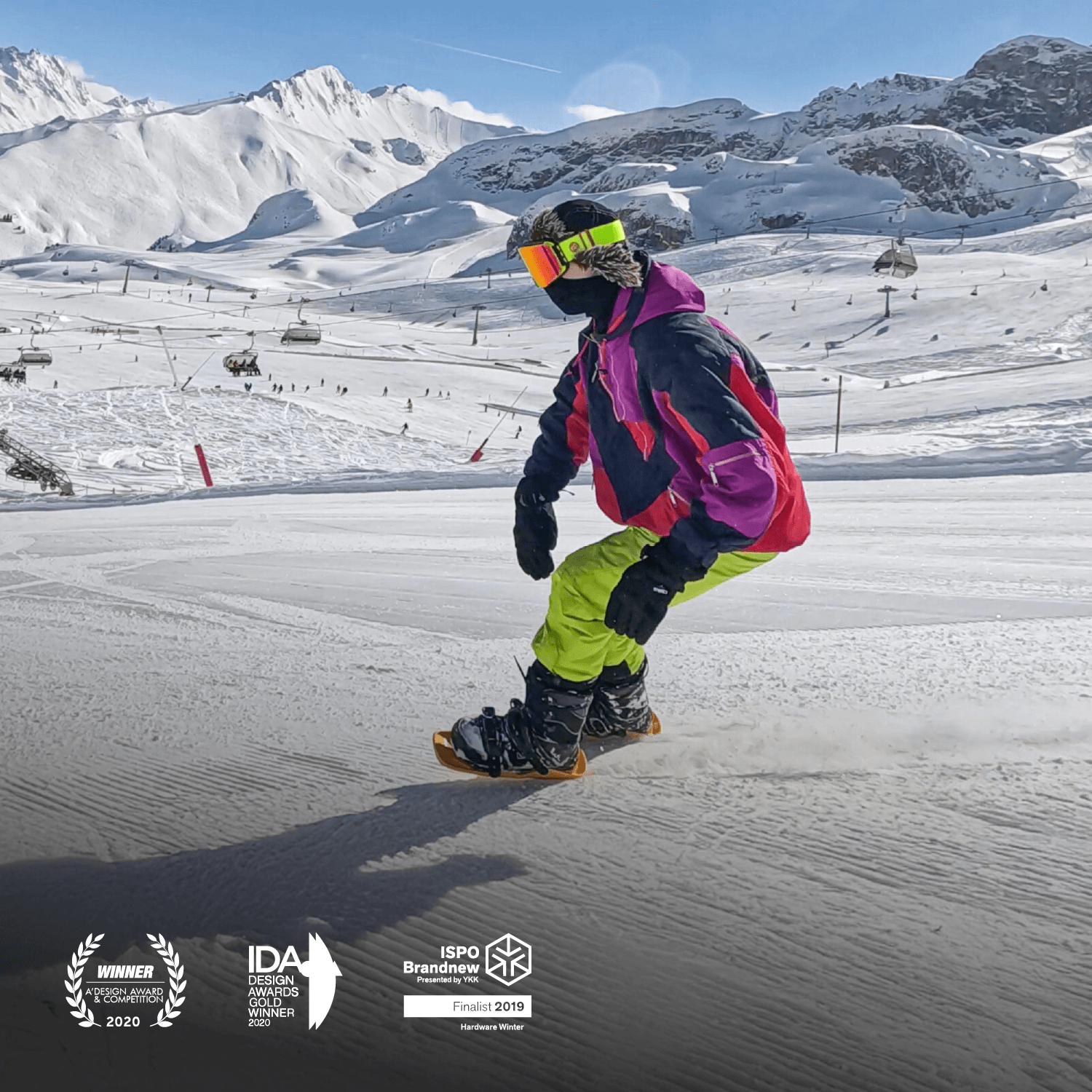




Zostaw komentarz
Ta strona jest chroniona przez hCaptcha i obowiązują na niej Polityka prywatności i Warunki korzystania z usługi serwisu hCaptcha.